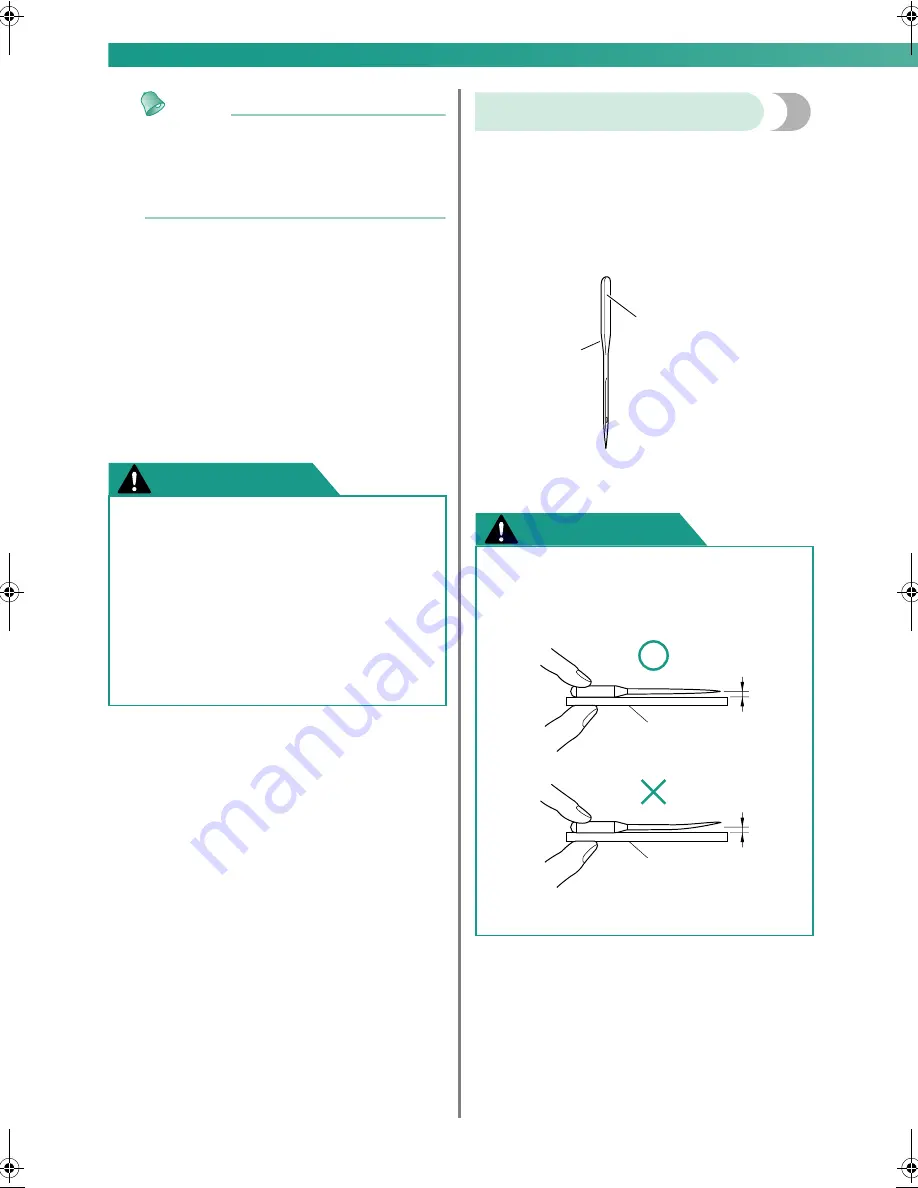
40
GETTING READY
— — — — — — — — — — — — — — — — — — — — — — — — — — — — — — — — — — — — — — — — — — — —
Memo
z
The lower the thread number is, the thicker
the thread, and the higher the needle
number, the thicker the needle.
z
A 75/11 needle is already installed when the
sewing machine is purchased.
■
Ball point needle (gold colored)
To avoid skipped stitches use ball point needles
with stretch fabrics.
■
Transparent nylon thread
Use a 90/14 to 100/16 needle, regardless of the
fabric or thread.
■
Embroidery needles
Use a 75/11 home sewing machine needle. When
embroidering on thick fabrics such as denim, use a
90/14 or 100/16 home sewing machine needle.
CAUTION
Checking the needle
Sewing with a bent needle is extremely dangerous
since the needle may break while the machine is
being operated.
Before using the needle, place the flat side of the
needle on a flat surface and check that the distance
between the needle and the flat surface is even.
a
Flat side
b
Needle type marking
CAUTION
z
The appropriate fabric, thread and needle
combinations are shown in the table
(page 39). If the combination of the
fabric, thread and needle is not correct,
particularly when sewing thick fabrics
(such as denim) with fine needles (such as
65/9 to 75/11) , the needle may bend or
break. In addition, the stitching may be
uneven or puckered or there may be
skipped stitches.
z
If the distance between the needle and
the flat surface is not even, the needle is
bent. Do not use a bent needle.
a
Flat surface
a
b
a
a
0711-0120-C-combo_E.book Page 40 Tuesday, August 26, 2008 2:43 PM
Summary of Contents for A-LINES Sofia BL137A
Page 1: ......
Page 16: ...14...
Page 70: ...SEWING BASICS 68...
Page 156: ...154 EMBROIDERY...
Page 174: ......
Page 175: ......
















































